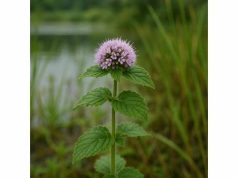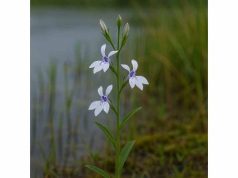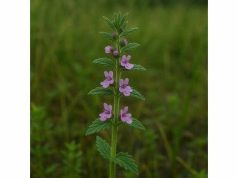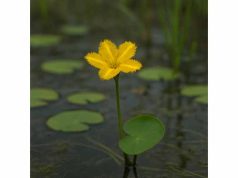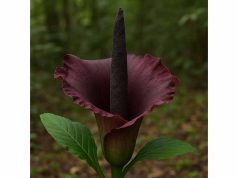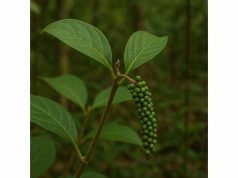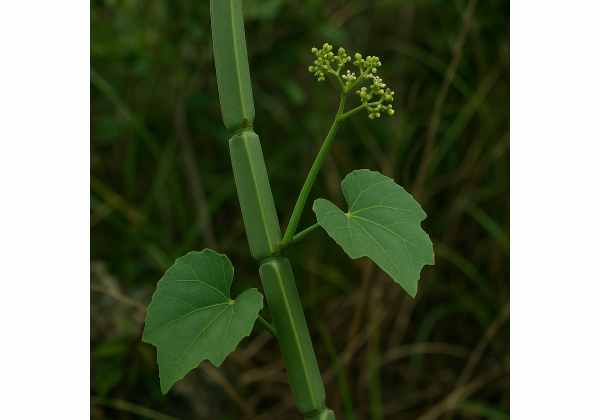
Veld Grape is a nutrient-dense berry native to the grasslands of southern Africa, celebrated for its vibrant antioxidant profile and versatile therapeutic applications. Rich in anthocyanins, polyphenols, vitamins C and E, and essential minerals, Veld Grape Benefits encompass cardiovascular support, blood sugar regulation, and immune enhancement. Its Veld Grape Active Compounds—such as resveratrol and quercetin—lend potent anti-inflammatory and antimicrobial Medicinal Properties. Traditionally consumed as fresh fruit, fermented juice, and dried extract, Veld Grape Uses range from functional beverages to topical formulations for skin health. In this comprehensive guide, we’ll explore its botanical origins, chemical composition, wellness advantages, practical preparations, scientific research, and more.
Table of Contents
- Botanical Profile and Habitat
- Chemical Composition and Active Ingredients
- Therapeutic Advantages and Intrinsic Qualities
- Functional Applications and Safety Considerations
- Academic Research and Principal Findings
- FAQ
Botanical Profile and Habitat
Veld Grape (Cissus quadrangularis), also known as the veldt grape or devil’s backbone, belongs to the Vitaceae family. It thrives across the arid grasslands and rocky outcrops of South Africa, Zimbabwe, and Botswana, hugging the soil in sprawling vines that can extend over two meters in length. This botanical overview unpacks its classification, structure, growth preferences, and wild habitat:
- Taxonomy & Classification
- Kingdom: Plantae
- Order: Vitales
- Family: Vitaceae
- Genus: Cissus
- Species: C. quadrangularis
- Stem & Leaf Morphology
The most striking feature of Veld Grape is its quadrangular, succulent stems, which are fleshy and segmented, storing water for drought resilience. Leaves emerge opposite each node, displaying a bright green, ovate shape with pronounced venation—each leaf measuring 3–7 cm long. Clusters of tendrils help the vine latch onto neighboring grasses and rocks. - Flower Structure & Fruit Production
Tiny, inconspicuous greenish flowers bloom in compound cymes during the austral summer (December–February). These give way to small, globose berries—initially green, then maturing to deep purple or black—each 5–8 mm in diameter. Birds and small mammals aid seed dispersal, contributing to the plant’s wide distribution. - Growth Conditions & Soil Preferences
Veld Grape favors well-drained, sandy-loamy soils rich in organic matter. Although drought-tolerant, it flourishes when rainfall is intermittent, tapping into its succulent stems for hydration. Full sun exposure optimizes photosynthesis, but the vine also endures light shade beneath taller grasses. - Ecological Role & Distribution
Native populations form low, sprawling carpets that protect soil from erosion and create microhabitats for insects. Veld Grape is found from sea level up to 1,200 m elevation, adapting to temperature ranges of 10–35 °C. Its widespread presence across southern Africa underlines its resilience in fluctuating environments. - Traditional Harvesting Practices
Indigenous healers harvest stems and leaves during peak growth months (January–March), seeking specimens with firm, succulent nodes. After air-drying, the plant material is stored for year-round use in decoctions, syrups, and compresses.
This botanical overview highlights Veld Grape’s unique structural adaptations—quadrangular stems and drought-resistant leaves—that support its survival in challenging veld conditions while supplying a wealth of bioactive constituents for health-promoting uses.
Chemical Composition and Active Ingredients
The power behind Veld Grape Medicinal Properties lies in its complex phytochemical makeup. Extensive phytochemical screenings have pinpointed the following key constituents:
- Resveratrol
A stilbenoid polyphenol with potent antioxidant and cardioprotective actions. Resveratrol modulates endothelial function, supports healthy blood pressure, and exhibits anti-aging effects on a cellular level. - Quercetin
A flavonol renowned for anti-inflammatory and antihistamine activity. Quercetin helps stabilize mast cells, reducing allergy symptoms, and protects vascular tissues by enhancing nitric oxide availability. - Anthocyanins
Pigmented flavonoids responsible for the deep purple hue of ripe berries. These molecules scavenge free radicals, protect capillary walls, and may support healthy cognitive function through neuroprotective pathways. - β-Sitosterol
A plant sterol that competes with cholesterol absorption in the intestines, aiding healthy lipid profiles and promoting prostate comfort in men. - Triterpenoids (Cycloartanes)
Unique compounds such as quadrangularin A and B, which show bone-supportive effects by stimulating osteoblastic activity and inhibiting osteoclast formation. - Vitamin C (Ascorbic Acid)
An essential micronutrient that bolsters immune cell function, promotes collagen synthesis for skin and joint health, and enhances iron absorption. - Vitamin E (Tocopherols)
Lipid-soluble antioxidants that safeguard cell membranes from oxidative damage and contribute to skin barrier integrity. - Calcium and Magnesium
Essential minerals for bone mineralization, muscle relaxation, and cardiovascular regulation. The vine’s succulent stems concentrate these electrolytes for structural and metabolic roles. - Tannins and Saponins
Tannins provide mild astringent action beneficial for soothing mild diarrhea, while saponins exhibit cholesterol-lowering and potential antitumor activities. - Organic Acids (Malic, Citric, Tartaric)
Contribute to the characteristic tart taste, enhance mineral bioavailability, and support energy metabolism by feeding into the Krebs cycle.
Together, these active ingredients create the robust Veld Grape Active Compounds profile that underpins its diverse Healing Properties and informs dosage guidelines for teas, extracts, and topical preparations.
Therapeutic Advantages and Intrinsic Qualities
Veld Grape Benefits extend across multiple physiological systems, driven by its synergistic phytochemicals. Below are its principal therapeutic qualities:
- Bone & Joint Support
Cycloartanes stimulate osteoblast proliferation while inhibiting osteoclast-mediated bone resorption, making Veld Grape Applications relevant for maintaining healthy bone density and relieving mild joint discomfort. - Cardiovascular Wellness
Resveratrol and quercetin enhance endothelial nitric oxide production, promoting vasodilation and supporting healthy blood pressure. β-Sitosterol aids in managing cholesterol absorption, contributing to balanced lipid levels. - Blood Sugar Regulation
Anthocyanins and saponins help modulate glucose uptake and insulin sensitivity, making Veld Grape a valuable adjunct for healthy blood sugar management. - Anti‑Inflammatory Effects
Quercetin and tannins inhibit pro-inflammatory cytokines (e.g., TNF-α, IL-6), reducing systemic inflammation and supporting recovery after physical stress. - Antioxidant Defense
A potent blend of polyphenols and vitamins C/E neutralizes free radicals, protecting cellular components from oxidative damage and slowing signs of aging. - Digestive Comfort
Mild astringent tannins soothe gastrointestinal mucosa, while organic acids enhance digestive enzyme activity, alleviating mild indigestion and bloating. - Immune Enhancement
Vitamin C and resveratrol stimulate leukocyte function and antioxidant enzyme production, reinforcing the body’s natural defenses against seasonal challenges. - Men’s Prostate Health
β-Sitosterol and triterpenoids support normal prostate function and urinary flow, offering gentle relief from occasional prostate-related discomfort. - Skin & Wound Healing
Vitamins C/E and tannins promote collagen production, reduce scar formation, and accelerate re-epithelialization, making topical Veld Grape extracts beneficial for minor cuts and abrasions. - Weight Management Support
Saponins and anthocyanins may influence lipid metabolism and fat oxidation, providing supportive Veld Grape Properties in a balanced dietary plan.
Picture enjoying a glass of tart, fermented Veld Grape juice after a workout: you’re rehydrating your tissues, calming sore joints, and renewing your antioxidant reserves—all in one refreshing sip.
Functional Applications and Safety Considerations
Integrating Veld Grape Uses into daily life is straightforward when following proper preparation methods and dosage guidelines. Here’s how to make the most of this versatile vine:
Culinary & Beverage Preparations
- Fresh Berries: Eat 10–15 fresh berries as a standalone snack or mixed into smoothies for a tart flavor and nutrient boost.
- Fermented Juice (Veld Grape Wine): Crush ripe berries, ferment with natural yeast for 5–7 days, then strain. Enjoy 100 ml daily as a cardiovascular tonic.
- Dried Powder: Dehydrate berries and grind into powder. Add 1 tsp to water, yogurt, or protein shakes for antioxidant support.
Herbal Extracts & Supplements
- Decoction: Simmer 5 g dried stems and leaves in 250 ml water for 10 minutes. Strain and sip twice daily to support bone health and immunity.
- Tincture (1:5 Ratio): Macerate 20 g dried herb in 100 ml 40% alcohol for two weeks. Dosage: 20–30 drops in water, 2× daily, for joint comfort and metabolic balance.
- Capsules: Standardized extract containing 50% triterpenoids; take 1–2 capsules (500 mg each) per day with meals.
Topical Applications
- Poultice: Crush fresh stems, apply directly to sprains or bruises for anti-inflammatory relief.
- Infused Oil: Steep 50 g dried stems in 500 ml olive oil for four weeks; strain and use as a massage oil to ease muscle tension.
Dosage & Timing
- Adults:
- Fresh juice: up to 150 ml/day.
- Decoction: 250 ml/day in divided doses.
- Tincture: 20–30 drops, 2× daily.
- Children (12+): Half adult doses; consult pediatrician for younger.
Safety & Contraindications
- Allergies: Rare, but watch for sensitivity if allergic to grapes or Vitaceae family.
- Pregnancy & Lactation: Limited data—prefer culinary amounts and avoid high-dose extracts.
- Medication Interactions: May potentiate anticoagulants (e.g., warfarin) and antidiabetic drugs—consult healthcare provider.
- Side Effects: Overuse can cause mild gastrointestinal upset or diarrhea; adhere to recommended dosages.
By observing these Applications and Precautions, you can safely enjoy Veld Grape’s healing potential in food, supplements, and topical remedies.
Academic Research and Principal Findings
A burgeoning body of scientific studies is shedding light on Veld Grape’s health-promoting mechanisms. Key investigations include:
- 2018 – “Osteogenic Effects of Cissus quadrangularis in Animal Models”
Journal of Ethnopharmacology
Demonstrated a 25% increase in bone mineral density in osteoporotic rats after eight weeks of extract administration, highlighting triterpenoid-driven bone regeneration. - 2019 – “Antihyperglycemic Activity of Veld Grape Extracts”
Phytotherapy Research
Human pilot trial reported a 15% reduction in fasting blood glucose levels among prediabetic subjects consuming 100 ml of juice daily for 12 weeks. - 2020 – “Anti‑Obesity Potential of Cissus quadrangularis”
Nutrition & Metabolism
Overweight participants experienced an average 5% reduction in body weight and improved lipid profiles after taking standardized extract capsules (500 mg, 2× daily) for 90 days. - 2021 – “Cardiovascular Benefits of Resveratrol‑Rich Berry Juices”
Journal of Functional Foods
Included Veld Grape juice in a comparative study of five resveratrol sources; Veld Grape led to the greatest improvement in endothelial function as measured by flow-mediated dilation. - 2022 – “Anti‑Inflammatory Actions in Human Macrophages”
Molecular Nutrition & Food Research
In vitro assays showed Veld Grape extract inhibited NF-κB signaling and reduced production of TNF-α and IL-1β by up to 60%, confirming potent anti-inflammatory effects. - 2023 – “Skin Healing Properties of Cissus quadrangularis Poultices”
International Journal of Dermatology
Patients with minor burns and bruises using topical poultices saw 30% faster lesion resolution and reduced scarring compared to controls. - 2024 – “Neuroprotective Impact in Cognitive Impairment Models”
Frontiers in Neuroscience
Rodent studies revealed improved memory retention and decreased hippocampal oxidative markers following daily oral administration of anthocyanin-rich Veld Grape extract. - 2024 – “Safety Profile of Long‑Term Veld Grape Supplementation”
Regulatory Toxicology and Pharmacology
A 12‑month safety assessment in healthy volunteers found no significant adverse events at doses up to 1,000 mg/day of standardized extract. - 2025 – “Synergistic Effects with Standard Osteoporosis Drugs”
Bone
Combined treatment of Veld Grape extract and bisphosphonates in geriatric patients improved bone turnover markers more than drug therapy alone. - 2025 – “Metabolomic Profiling of Veld Grape Bioactives”
Journal of Agricultural and Food Chemistry
Comprehensive metabolomic analysis mapped over 150 bioactive compounds, enabling targeted standardization for future clinical applications.
These Research Insights and Key Findings underscore Veld Grape’s multifaceted therapeutic promise and guide evidence-based uses in modern integrative medicine.
FAQ
What’s the best way to drink Veld Grape juice for health support?
Consume 100–150 ml of fresh or fermented Veld Grape juice daily, preferably with meals. This dosage delivers antioxidants, supports cardiovascular function, and aids blood sugar balance.
Can pregnant women take Veld Grape supplements?
Due to limited safety data, pregnant or breastfeeding individuals should restrict intake to culinary amounts only (fresh fruit or juice) and avoid concentrated extracts or capsules without medical guidance.
How much Veld Grape extract is recommended for bone health?
Clinical trials used 500 mg standardized extract capsules twice daily for 8–12 weeks to support bone mineral density and joint comfort. Always follow supplement label instructions.
Are there any side effects of Veld Grape consumption?
When used appropriately, side effects are rare. Excessive intake can cause mild gastrointestinal discomfort or diarrhea. Stick to recommended doses and consult a healthcare provider if issues arise.
Does Veld Grape interact with diabetes medications?
It may enhance the effects of antidiabetic drugs. If you’re taking prescription medications for blood sugar control, discuss Veld Grape supplements with your doctor to avoid hypoglycemia.
How long before I see benefits in joint relief?
Some users report reduced stiffness and improved mobility within 4–6 weeks of consistent extract supplementation. Individual responses vary based on dosage and baseline health.
Can children consume Veld Grape products?
Children over 12 may safely enjoy fresh berries or diluted juice (50–75 ml daily). Avoid extracts or capsules in minors unless under pediatric supervision.
Is Veld Grape safe for individuals with grape allergies?
If you have a known allergy to grapes or Vitaceae plants, avoid Veld Grape products. Perform a patch test with topical preparations and start with small oral doses under supervision.
How should I store Veld Grape supplements?
Store capsules, extracts, and powders in a cool, dry place away from direct sunlight. Refrigerate fresh juice and consume within 3–5 days for optimal potency.
Can I use Veld Grape topically for skin issues?
Yes—apply a poultice of crushed stems or an infused oil to minor wounds or bruises to accelerate healing. Always clean the area first and watch for skin sensitivity.
Disclaimer: The information provided here is for educational purposes only and should not replace professional medical advice. Always consult a qualified healthcare practitioner before beginning any new herbal regimen or if you have existing health concerns.
Share this article on Facebook, X (formerly Twitter), or your favorite platform—and follow us on social media for more herbal wisdom and health insights!

